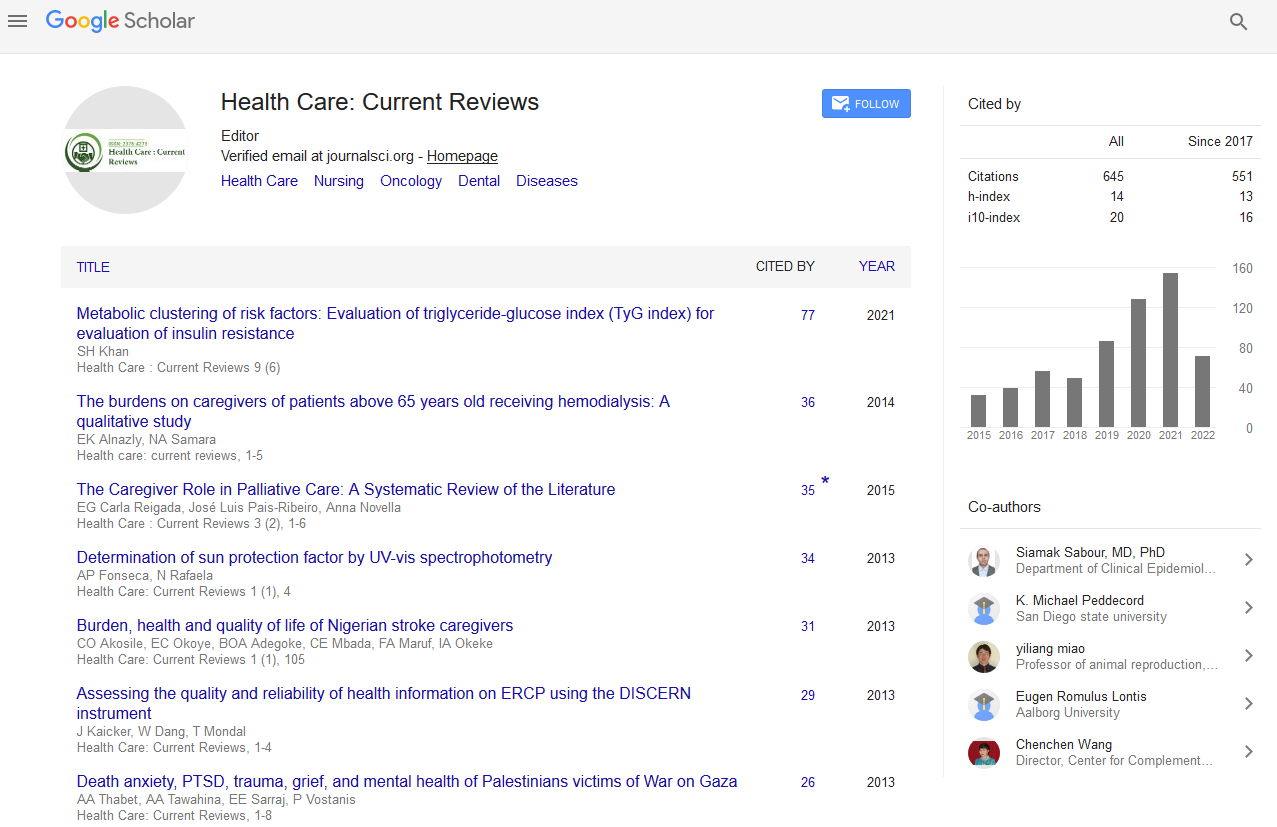PMC/PubMed Indexed Articles
Indexed In
- Open J Gate
- Academic Keys
- RefSeek
- Hamdard University
- EBSCO A-Z
- Publons
- Geneva Foundation for Medical Education and Research
- Google Scholar
Useful Links
Share This Page
Journal Flyer

Open Access Journals
- Agri and Aquaculture
- Biochemistry
- Bioinformatics & Systems Biology
- Business & Management
- Chemistry
- Clinical Sciences
- Engineering
- Food & Nutrition
- General Science
- Genetics & Molecular Biology
- Immunology & Microbiology
- Medical Sciences
- Neuroscience & Psychology
- Nursing & Health Care
- Pharmaceutical Sciences
Who provides primary care in Arizona?
2nd Annual Congress and Medicare Expo on Primary Care & General Pediatrics
September 19-20, 2016 Phoenix, USA
Joe Tabor and Nick Jennings
University of Arizona College of Public Health, USA
Scientific Tracks Abstracts: Health Care: Current Reviews
Abstract:
Results from a community-level analysis of health providers show high spatial variability of the workforce data, greater susceptibility to data errors and bias due to incorrect assumptions about the data. Arizona has growing needs for primary care providers but information about the role and distribution is lacking. Primary care physicians, PAs, and NPs compared at zip code and county levels showed geographical maldistribution of professions that could influence the selection of preceptorship and residency training locations. County level comparisons between physician licensing board data and Health Professional Shortage Areas (HPSAs) data show a differential bias in magnitude and direction. State level comparisons underscore how a state such as Alaska can improve primary healthcare rankings by including physician assistants, nurse practitioners and certified nurse midwives. Spatial analysis of healthcare workforce and points of services will better inform policy development by federal and state governments, educational and professional organizations, and the private sector.
Biography :
Joe Tabor PhD, MPH is an Assistant Professor in the Center for Rural Health and has appointments in Community, Environment and Policy Department at the University of Arizona’s College of Public Health in Tucson. His current research is in health care workforce and the epidemiology of valley fever (coccidioimycosis). He has 25 years of consulting experience in natural resource management, agriculture, and public health in North America, Caribbean, Africa, and Asia. This includes the disciplines of epidemiology, agronomy, botany, ecology, forestry, and pedology. He teaches environmental health policy.
Email: jatabor@email.arizona.edu


